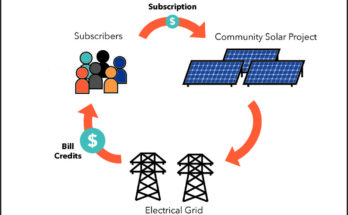Electricity is now of the major problem that Pakistan is facing from last 8 years. Electricity is the necessity of every human life. Energy is the most important sources for economic growth of a country. Unfortunately Pakistan has to face a major energy crisis in Natural gas, Power and Oil. This would delay the economy of Pakistan (which is already in complexity). The high cost of the import of Oil, Construction of Big Dams, uncertain regional security environment attached with lack of national agreement to build dams are likely to delay quick resolution of energy crises. This energy deficit will lead to inflation. Similarly subsidies of billions of rupees have to be doped out “Water and Power Development Authority (WAPDA)” to bear loses.
An Energy Crisis is threatening large in upcoming years. There is an expected short fall up to 50% because of increase in demand. Pakistan energy sector comprises of major sources with share of 50% of gas, followed by oil 29%, hydro electricity 11%, and coal 8%. Consequently, Pakistan imports energy to overcome the problem and maintain standard of living of people. The major shortfall is expected in natural gas supplies. Pakistan has a huge demand to generate power through oil but we can meet only 20% of our requirement through original production and rest of oil is imported from other countries of world.
Pakistan has a total hydro potential of 40,000 MW against which it generates only 6500 MW. Consequently power shortage will be up to 11,750 MV per year. It will affect agricultural, industry, and particularly the storage capacity of Mangla, Terbela and Chashma Dams will be reduced due to mud deposits.
Pakistan has world’s seven largest reserves of coal after discovery of THAR. These reserves are still untouched due to lack of technique in coal mining. Similarly solar wind energy, biomass or nuclear power in coastal areas of Baluchistan and Sindh have a lot of potential to generate electricity but the government is not using any of them and gaining of technology at an enormous cost makes this an unbelievable source. Pakistan has only two nuclear plants providing two percent of electricity to our country. Population explosion is another cause of energy crises.
The government should make strategies to overcome the energy crises. The government plans to generate 7880 MW electricity by 2011 out of it 4860 MW is to be generated by firing natural gas. It should maximize the utilization of hydroelectric resources through building of dams such as KALABAGH DAM, BHASHA DAM etc. to produce cheap electricity. It should improve relations with international and Regional Corporation. It should activate in THAR coal project with the assistance of china to address energy crises. It should obtain new policies to overcome the problem through renewable energy resources: i.e. Solar, Wind and Tidal energy.
It should take positive steps to finalize international gas pipe line projects i.e. IPI (India, Pakistan, Iran) Gas pipe line project which meet the needs of gas demands of Pakistan and possibly India. Similarly a Sharjah based company initiated and sponsored a gas import project through an offshore pipe line from QATAR TO PAKISTAN in1990 but it is still under consideration.
At present Pakistan is also seeking to expand its primary energy supply base by encouraging oil exploration and power generation companies to undertake energy project in Pakistan. The regional gas pipe line projects in which Pakistan is actively pursuing to meet its expanding domestic energy demands.
Two key elements of a possible solution are: categorical change in the pattern of energy consumption and change in lifestyles.
The current energy consumption trends in Pakistan are extremely inefficient, whether it be in the domestic, industrial, trade or commercial sectors. With minimal effort, well over ten per cent of national electricity can be saved by applying only the first level of energy conservation that is a change in attitude. It is simple, instant and effective and all it requires is a stop to using energy unnecessarily.
Leaving lights and home appliances on even when they are not being used is a common practice in our society. Similarly, many businesses such as shops dealing in cloth and garments, jewelers, cosmetics, home appliances and electronics are usually extravagantly lit. It is commonly observed that shops that could do with two or three 40-watt tube lights to meet the desired level of luminance use as many as 15 to 20 tubes. Not only does this increase power consumption, it also generates heat and makes the environment uncomfortable.
A further economy of 10-15 per cent can be achieved by introducing the second level of energy-conservation practices, especially in industry. Collectively, just through conservation, more than half of the electricity deficit can be met. However to do that, public education is essential. With the help of effective electronic and print media campaigns the government can quickly educate the masses.
The second part of the solution is a change in lifestyles. It would begin with the acknowledgement that the country is facing a national disaster and every citizen has to pitch in to overcome it. The nation has to draw a clear line between necessities (lighting, fans, TVs, computers, etc) and luxuries (air conditioners, microwaves, etc). There is not enough electricity to meet both requirements.
We will have to compromise on luxurious lifestyles in order to meet the necessities. Markets and commercial places can substantially reduce their power consumption by changing their working hours. An early start and early end to capitalize on daylight as much as possible should be recommended rather than having opening hours from afternoon until late at night. Any such policy should be made at the highest level and its implementation should also begin there because charity starts at home.
If load shedding is still unavoidable despite all these measures, Wapda/KESC should organize the cuts in a sensible way to cause minimum discomfort. Load shedding schedules should be properly planned and announced.
Although there are many proposed solution of energy crisis in Pakistan but privatization of energy sector in Pakistan is the best solution of Energy Crisis in Pakistan. WE are facing a serious energy crisis because of various factors. The centralization of energy policymaking and the federal government’s control over state institutions responsible for production, transmission, distribution and regulators are main causes of energy crises. The private sector invested in thermal power plants, but it is allowed to sell electricity only to the distribution companies owned by the federal government.
There is no other option now to overcome the shortage and provide relief to the people from load shedding except changing the status quo of power sector. If govt. want to get rid of this energy crisis in Pakistan than they should adopt privatization to eliminate this severe energy crisis in Pakistan.
CONCLUSION:
Our government should think upon these problems to overcome on this. So government should make new projects like KALA BAGH DAM which is very important for our country. If government make only kala bagh dam then we can easily solve the problem of electricity in Pakistan. Government utilizes natural resources properly and makes strategies which will help Pakistan to solve their major problem and by doing this we can easily overcome in all sectors and become a developing nation.
This Article is Written by “Osama bin Fayaz” Guest Author At Envirocivil.com




